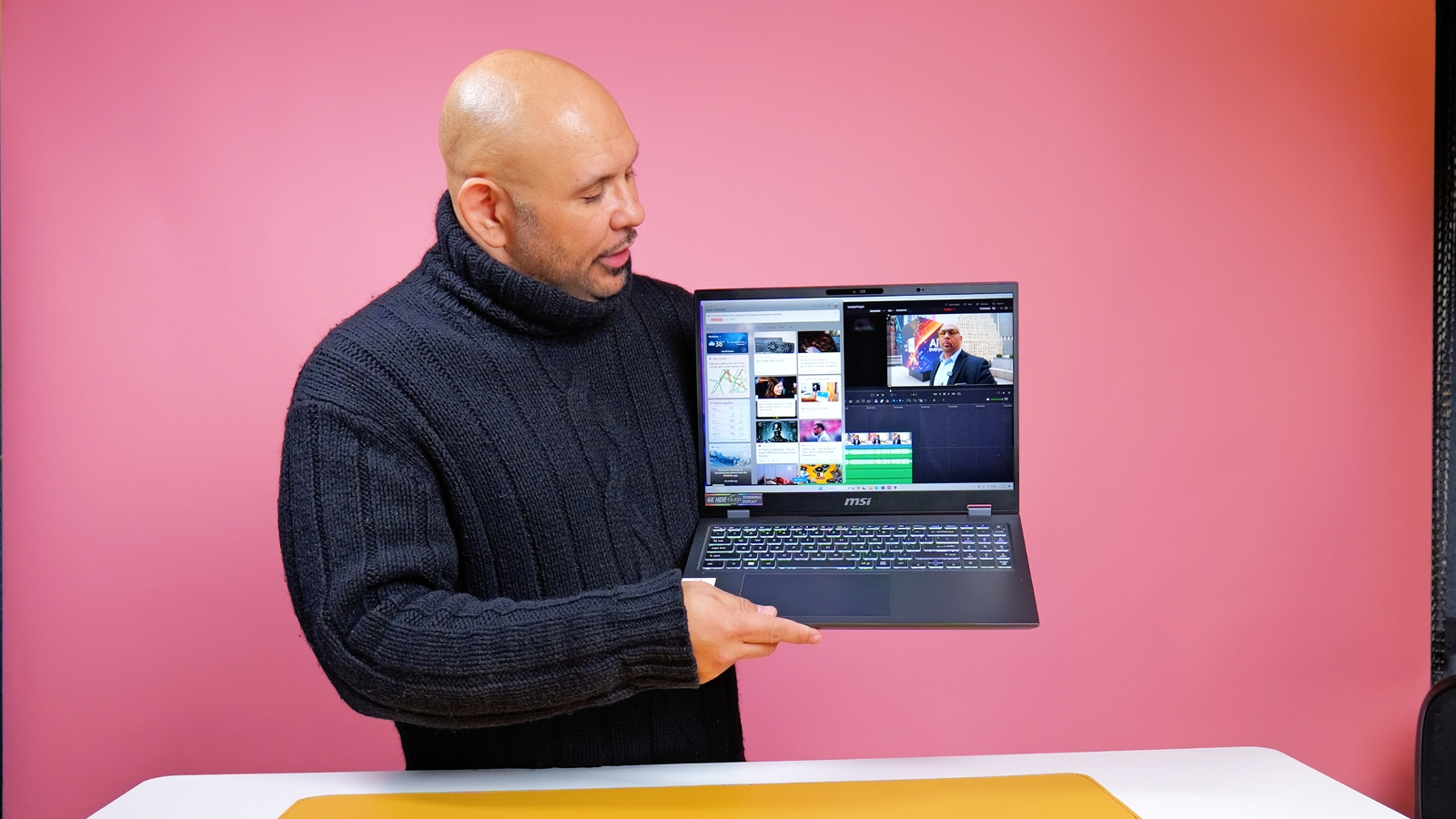To the joy of Apple enthusiasts, the fruit monikered overlords of Cupertino launched the new 15-inch MacBook Air M3 this past week and fans are rightfully excited. While the base model does have one issue that would keep me from recommending it, there’s plenty to recommend it if you choose the right configuration.
On that note, if you have more high-end needs things can get pretty pricey. Going all in and upgrading to 24GB of RAM with at least a 1TB SSD will run you $2,099, which sounds more like MacBook Pro territory. This is why I’m here to point out that there is a better option, that will get you more RAM and a larger SSD and save you $500.
Not only is it more affordable, can edit photos and videos, and has comparable or better test scores in several areas, but it also delivered a marathon battery life test for us at over 13 hours!
What magical unicorn laptop is this? It is the MSI Prestige 16 AI Evo and for all you content creator types, it has a considerably more colorful display. The Intel Core Ultra powered MSI Prestige, with its integrated Intel Arc GPU, is shockingly good, and was waiting for a worthy challenger since it launched in December, enter the 15-inch MacBook Air M3. Again, Apple’s laptop is great in its own right, but you can get more with the MSI Prestige 16 AI Evo.
We can’t do a perfect spec match comparison of these two laptops, because our MSI Prestige review unit featured 32GB of RAM, while our 15-inch MacBook Air M3 only has 16GB. As we already mentioned to one that still can’t match the specs of the $1,399 Prestige.
Also, the MacBook Air comes with just 2 Thunderbolt ports, beyond pure specs, the Prestige offers a wider range of ports, including the ever-useful USB-A slots, an ethernet port, HDMI, and an SD card reader – features the MacBook Air lacks.
Let’s have a deeper look as to why the MSI kicks the MBA M3 butt.
Which M3 MacBook Air am I pitting against the MSI Prestige 16 AI Evo?
The M3 MacBook Air we tested and reviewed has the following configuration:
- M3 chip with 8-Core CPU, 10-Core GPU
- 16GB of RAM
- 512 GB SSD
- 15.3-inch Liquid Retina, 2560 x 1664-pixel display
- Price: $1,699
The MSI Prestige 16 AI Evo we tested and reviewed has the following components:
- Intel Core Ultra 7 155H
- 32GB of RAM
- 1TB SSD
- 16-inch OLED 3,840×2,400
- Price: $1,399
As we see here, the MacBook Air M3 costs more and brings less to the table. Apple is very comfortable charging you more for less.
Where to buy? You can find the MSI Prestige 16 AI Evo at BestBuy for $1,399. The M3 MacBook Air is $1,699 at Best Buy.
1. The MSI Prestige 16 AI Evo is more powerful than the 15-inch MacBook Air M3
The 15-inch MacBook Air M3 we’ve tested is packed with an M3 chip (8-core CPU, 10-Core GPU), which is a speedy performer — but not as blisteringly fast as the Intel Core Ultra 7 155H processor inside the Prestige 16.
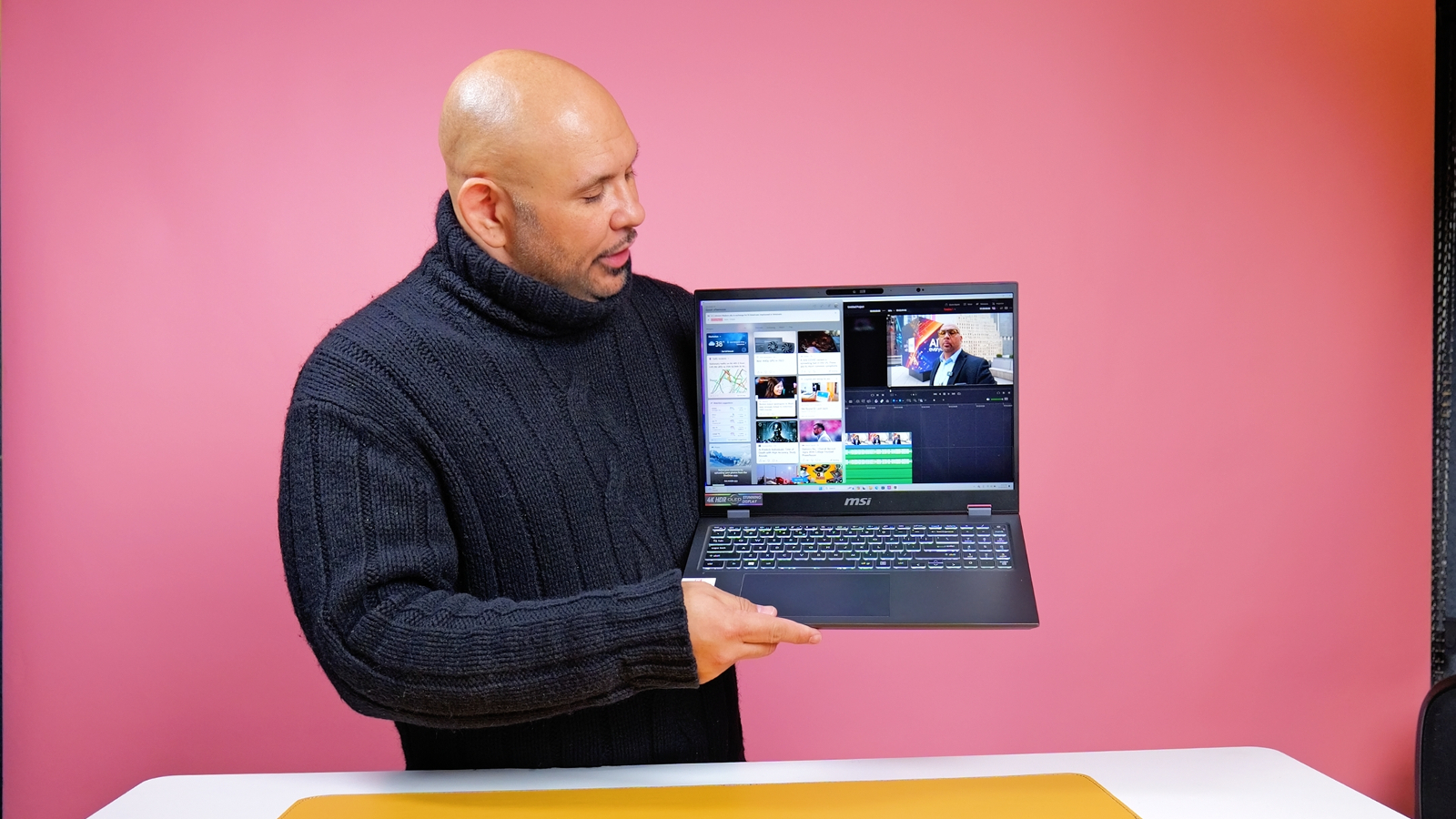
Let’s pull up the multi-core scores from Geekbench 6.2.2, shall we?
| MSI Prestige 16 AI Evo | Apple MacBook Air M3 |
|---|---|
| 13,310 | 12,052 |
The 15-inch M3 MacBook Air delivered a score of 12,025, which is very good, but the MSI Prestige 16 AI Evo blew past it with a score of 13,310, proving the Prestige will give you better performance for less money. Geekbench tests how well a laptop can handle a plethora of processes, including PDF and text rendering, face detection, image inpainting, HDR, ray tracing, machine learning, speech recognition, and other workloads.
Notably the Air does win on single-core in Geekbench 6.2.2 with a score of 3,102 compared to 2,434 for the MSI, but most apps leverage multi-core performance, so this remains a win for the MSI overall.
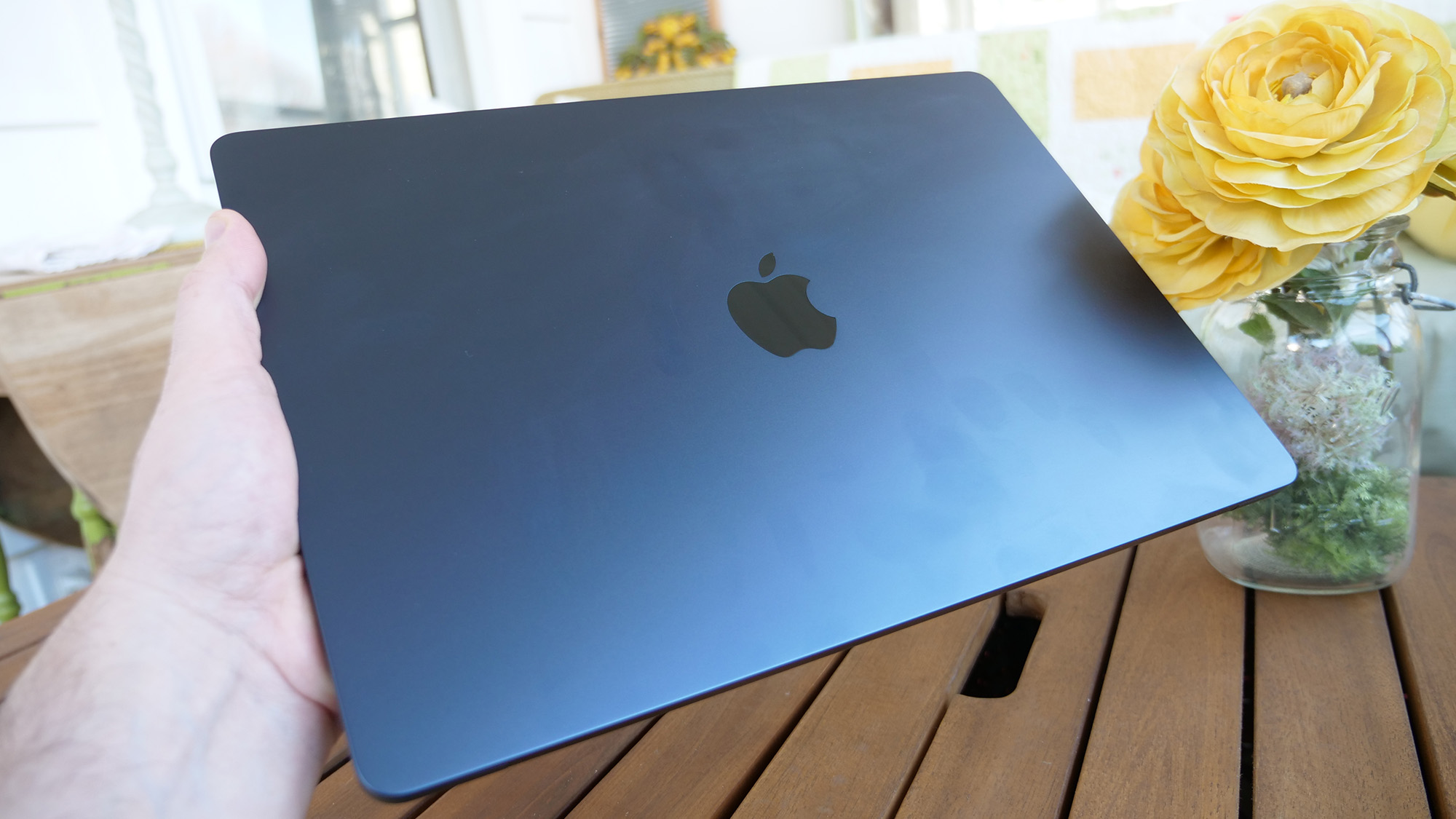
You may be thinking, “That’s just one benchmark” However, let me share another benchmark, that creators find important.
2. The MSI Prestige 16 AI Evo is better for content creators than the 15-inch MacBook Air M3
We tested both laptops on the Handbrake 1.7 transcoding benchmark, which tests how fast a laptop can convert a 4K video to 1080p resolution using the Fast 1080p30 preset. When you’re a content creator, rendering speed is super important.
| MSI Prestige 16 AI Evo | Apple MacBook Air M3 |
|---|---|
| 5:27 | 6:34 |
| Row 1 – Cell 0 | Row 1 – Cell 1 |
When you’re in post and need to turn around project quickly, rendering speeds are important. During our testing we were only dealing with a 6.5GB 4K resolution video, but obviously you are often going to be working with larger video files even if you only work in 4K.
I film mostly in 6K and sometimes 8K. In my experience with the Prestige 16, it giggled at the 6K footage I filmed and edited in DaVinci Resolve and rendered not only quickly, but did so while I was working in the field, unplugged.
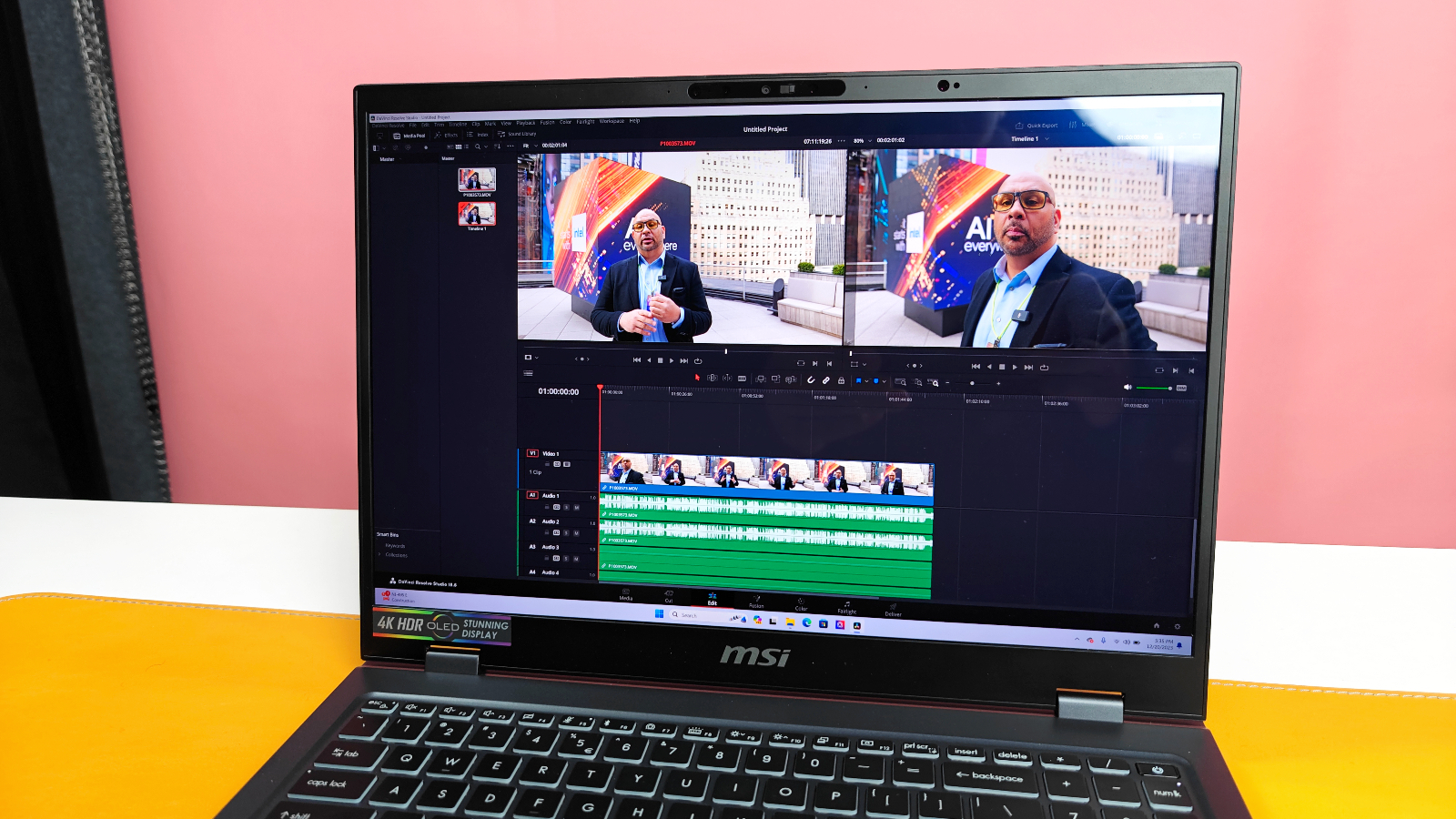
4.The MSI Prestige 16 AI Evo has a better display than the 15-inch MacBook Air M3
Apple’s marketing department deserves an Oscar for the word salad it uses to sell consumers inferior display technology. Retina Displays (2880 x 1864) are solid, but they’re just aging LED backlit IPS LCD technology that cannot keep up with the 4K (3,840 x 2,400) OLED panel of the MSI Prestige 16 AI Evo.
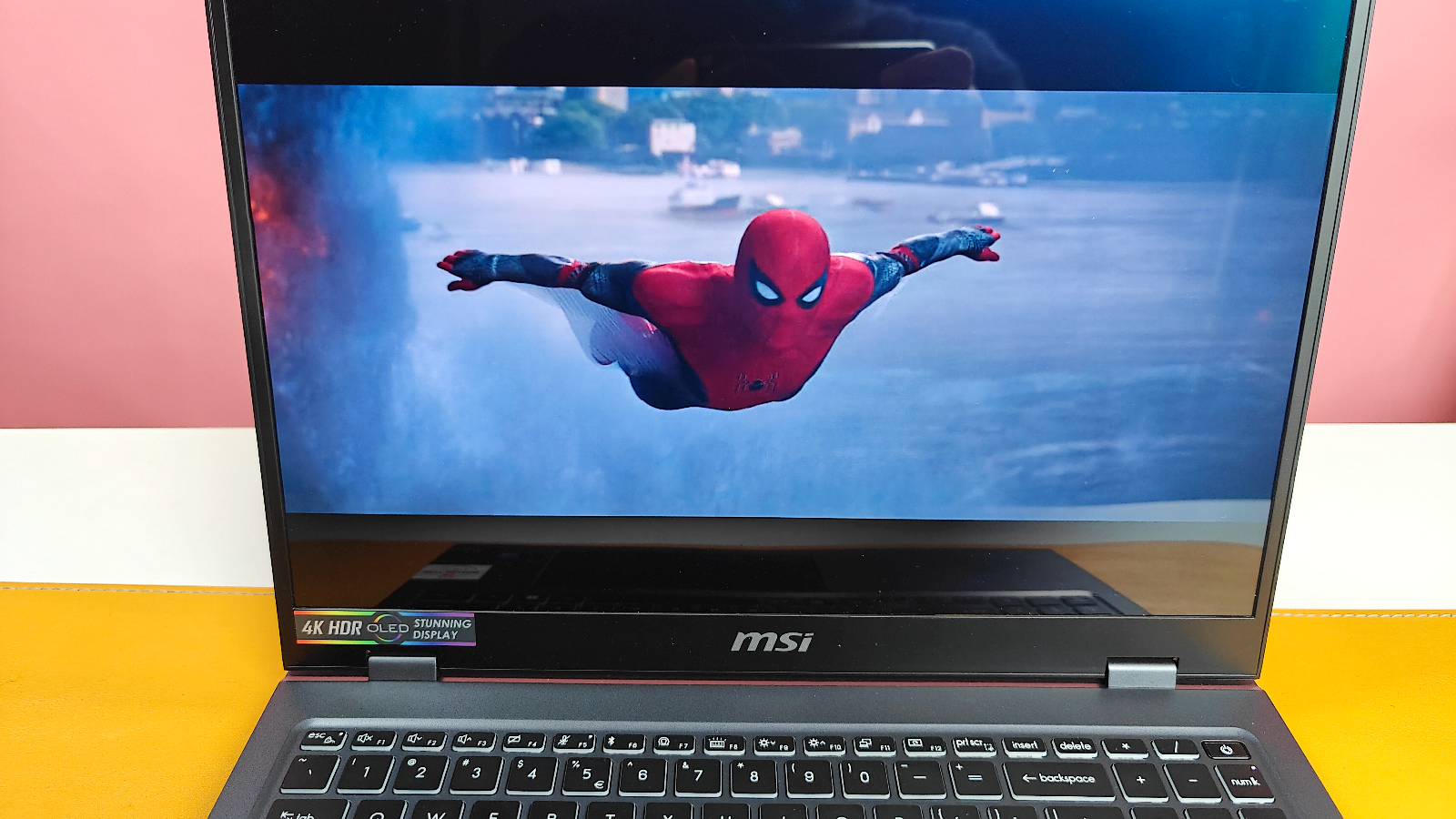
In addition to a Liquid Retina display, the M3 MacBook Air panel is just 15.3 inches. Meanwhile, the OLED 16-inch 4K panel on the MSI is better in every metric except brightness. When you’re editing photos and video the most important thing is color accuracy and as you can see here, the Prestige blows the 15-inch MBA M3 away.
| Metrics | MSI Prestige 16 AI Evo | MacBook Air M3 |
| sRGB | 194.7 | 109.4 |
| DCI-P3 | 137.9 | 77.5 |
| Delta E | 0.17 | 0.3 |
| Brightness | 368.2 | 482.4 |
According to our testing, the Prestige 16 covers 194.7% of the sRGB color gamut, which is much better than the MacBook Air’s 109.4%. When it comes to DCI-P3 color gamut coverage, the MSI delivers a similarly decisive victory, covering 137.9% of the space compared to the MacBook Air’s 77.5%, which is very disappointing for a laptop many will use for creative endeavors.
Typically, MacBooks tend to be brighter than Windows laptops, so that is not shocking here. The MBA M3 came in a 482.4 nits, which is an outstanding score. The MSI didn’t come close at 368.2, which is below the mainstream laptop average of 382-nits, but it isn’t a dim display.
We were surprised to see the MSI Prestige 16 AI Evo’s display score better in color accuracy with a Delta E score of 0.17, which the lower the Delta E, the more color accurate it is. The Air M3 scored a 0.3, which is the worst result we’ve seen from a MacBook in recent memory in a super-important content creators category.
5. The M3 MacBook Air has better battery life, but MSI is catching up
One thing modern MacBooks are known for is power efficiency, however, for a Windows laptop, the Prestige 16’s battery life results surprised us. On average Windows laptops last between 9 to 10 hours in our battery test, however, the Prestige 16 managed to survive for 13 hours and 4 minutes!
| Apple MacBook Air M3 | MSI Prestige 16 AI Evo |
|---|---|
| 15:03 | 13:04 |
The M3 MacBook Air finally defeated the Prestige 16 in something! It lasted 15 hours and 3 minutes on a charge, which is amazing for a thin-and-light laptop with this kind of performance and will land it among our laptops with the best battery life. So while technically this is a loss for the MSI Prestige 16 AI Evo, I still think it is worth highlighting. MSI is waving the banner for the new Intel Core Ultra CPU and Intel Arc GPU, here’s hoping this is a sign of things to come for Windows laptops in 2024.
Bottom line
Let’s not forget that the 15-inch MacBook Air M3 we tested is $1,699. Meanwhile, the MSI Prestige 16 AI Evo comes with better specs for a more affordable $1,399. Thanks to its magnesium build the MSI also weighs the same 3.3 pounds while delivering a larger and better 16-inch 4K OLED display. Spending up to get the Air M3 that gets as close as possible to the specs of the MSI will push you over $2,000!
Thanks to the Intel Core Ultra chipset, MSI has delivered a powerful laptop that can easily compete with and beat the just-released 15-inch MacBook Air M3. People need to start paying attention to MSI as it continues to bring laptops to market that deliver excellent performance and competitive battery life.

